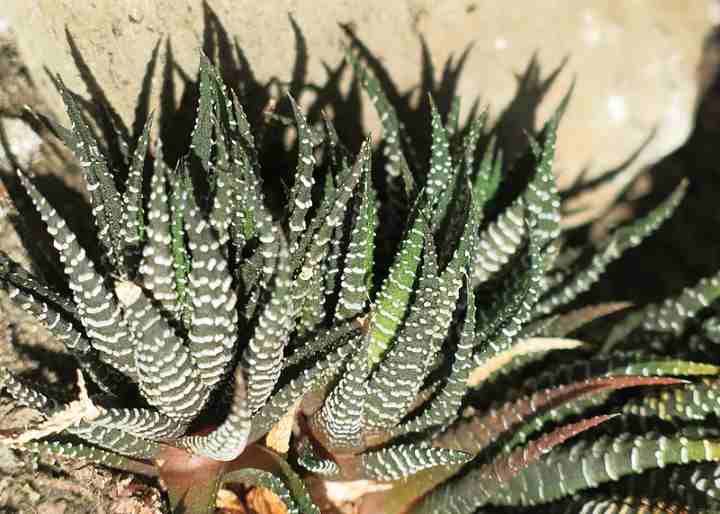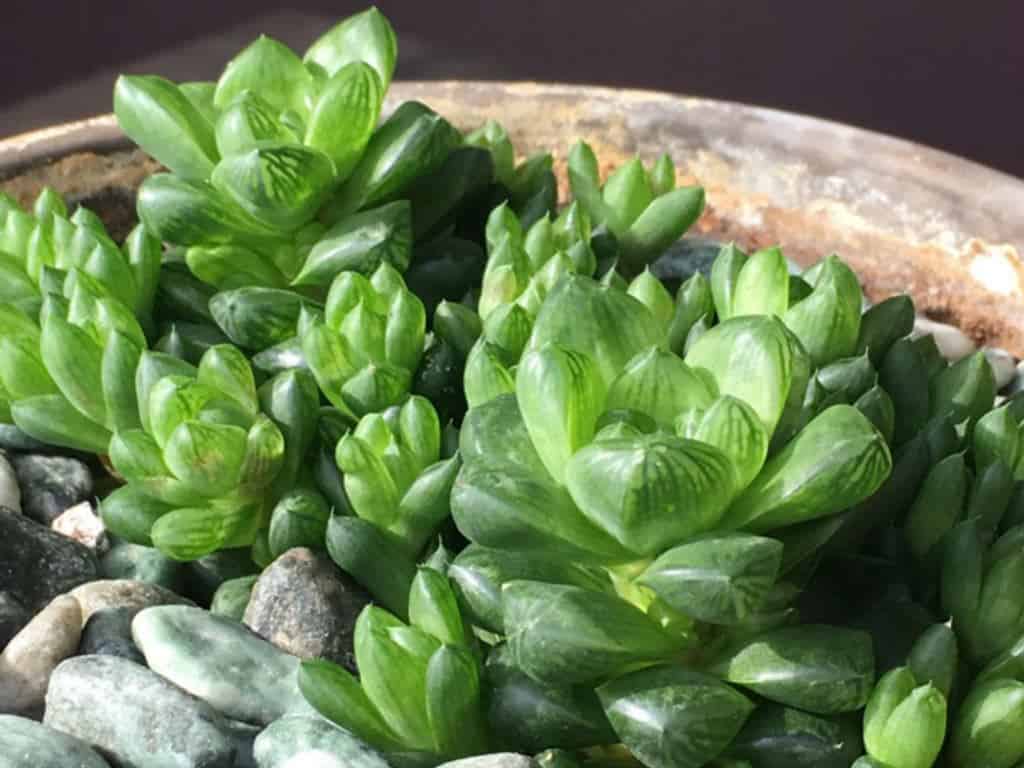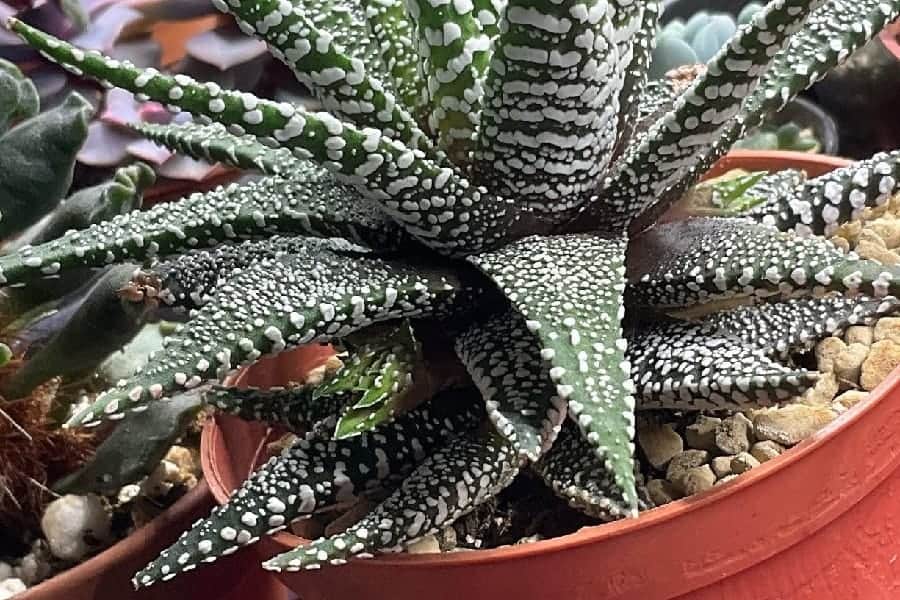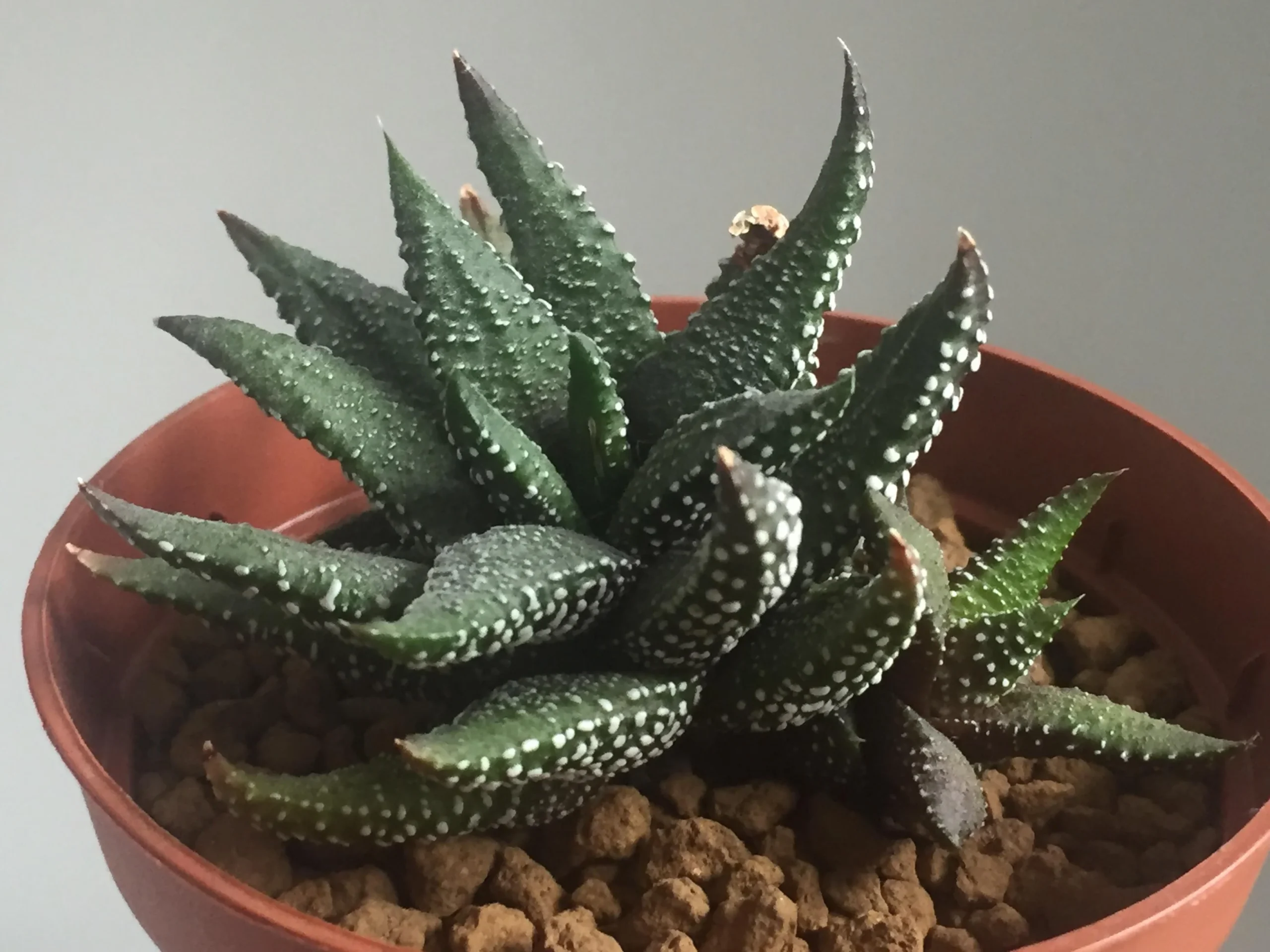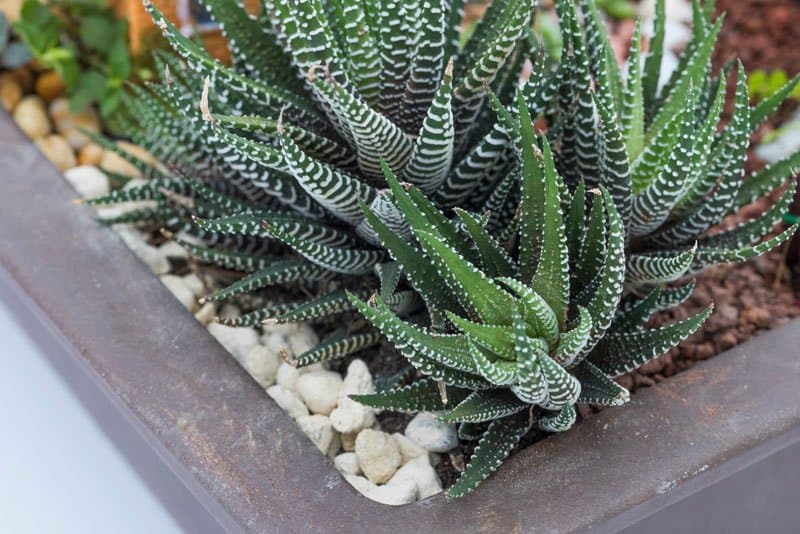The haworthia fasciata, commonly known as the zebra plant, Zebra Cactus, Zebra Haworthia, zebra succulent, zebra plant succulent, or haworthia succulent, is an incredibly resilient succulent that thrives in bright, indirect sunlight, but tolerates low-light settings with ease.
In addition to the relative ease of care, it’s a very attractive addition to any home or office space, thanks to its spiky leaves and pretty white markings on the foliage
To thrive, zebra plants need bright light but not full sun, so place them in your kitchen or near a south-facing window. Haworthia fasciata grows well in the summer and doesn’t need much water; however, during the winter months, water once every two weeks or so and let the soil dry out between watering.
When it comes to feeding your zebra plant, stick to fertilizer meant for succulents and cacti, which you can find at any garden center or home improvement store.
Your haworthia fasciata (zebra plant) will become an attractive, low-maintenance addition to your home or office if you provide it with just the right amount of care and attention. Proper haworthia fasciata care will ensure that your plant stays healthy and continues to grow while keeping your cleaning time to a minimum.
Origin and distribution
Haworthia fasciata, also called Zebra Haworthia and Stripe-Leaf Plant, is native to Africa, where it occurs in open grassland or rocky areas. This succulent plant is widely distributed and has a very large range that extends from South Africa across Namibia and Botswana into northern Zimbabwe and Mozambique. The species name fasciata means banded in reference to the colorful markings on its leaves.
Zebra Haworthia was introduced to Europe in 1837 by Robert Hermann Schomburgk, who collected plants for Kew Gardens near London. The zebra plant belongs to a genus of about 50 species within the family Asphodelaceae. It grows as an upright stemless rosette of strap-shaped leaves with alternating dark green and white stripes that form bands on each leaf.
The surface of each leaf is rough due to small raised spots called tubercles which are actually small modified leaf cells filled with water that help increase water retention in arid environments.
Haworthia fasciata propagation
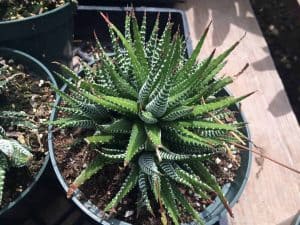
Haworthia fasciata propagates easily from cuttings. Using a sharp, sterile knife, remove healthy, non-flowering shoots with at least three leaves and strip them of their lower leaves. They can be placed directly into moist potting soil that has been mixed with coarse sand to help promote drainage and prevent rotting.
Be sure to keep them moist until they are established in their new pot and have begun new growth. Once you have some plants, you can propagate your own offspring by placing several stems in a small pot filled with potting soil. Keep it watered regularly and allow some time for them to grow together.
Zebra plant succulent care information
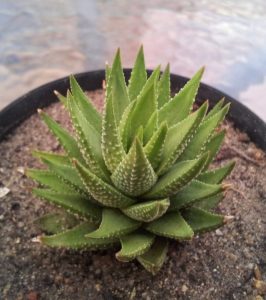
Haworthia fasciata is a common succulent that grows very slowly, so you can expect to keep it for several years. It requires minimal care and thrives in shade or partial sun.
Haworthias are some of the most tolerant plants for overwatering; in fact, their main requirement is consistently moist soil. You’ll have no trouble finding plenty of water if you keep your zebra plant in full sun; your job will be to ensure it doesn’t get too much water.
Light requirement
Haworthia fasciata is a succulent. They thrive in partial sun and can tolerate less-than-ideal lighting conditions, but will not flower as readily. If you want your zebra plant to bloom often, consider keeping it near a window with regular sunlight.
Those who prefer low-light conditions should place their zebra plant in an area that receives several hours of natural or artificial light per day.
Soil/potting mix
Haworthia fasciata do best in well-draining, soil-based media. A mix of one-part peat moss to two parts perlite is ideal, but any commercial potting mix will work fine. Be sure that your pot has adequate drainage holes.
Plants should be potted in a container with a drainage hole that allows water to drain freely from them. If you can’t find a suitable container at your local garden center, there are many options available online; make sure you choose one with adequate drainage for your plant!
Watering
Haworthia fasciata, as a rule, like to dry out between waterings. If left sitting in water for too long, Haworthias will lose their roots and rot away.
A good rule of thumb is to water your zebra plant when you notice about half of its soil has been lost through evaporation. As with most succulents and cacti, watering can vary depending on light exposure and season.
Fertilizer
Although it is a succulent plant, Haworthia fasciata needs regular feeding. You should fertilize your plant two or three times per year, around springtime and in autumn.
If you’re growing it outdoors, use a fertilizer rich in phosphorus; if indoors, feed with one high in nitrogen. Feed plants approximately once every six weeks to avoid over-fertilizing; wait at least four weeks before giving them another dose.
Temperature
Zebra plants should be kept in warm, sunny rooms, between 72 and 78 degrees Fahrenheit. If you want to give your plant even more light, you can move it outside for a few hours a day. Be sure to keep it out of direct sunlight, as strong UV rays could burn its delicate leaves.
In winter, when temperatures drop lower than 60 degrees indoors or if you have shorter days in general, zebra plants should be moved to a cool room; temperatures between 50 and 60 degrees will be suitable.
Humidity
One of the key variables to good Haworthia fasciata care is humidity. As a succulent, it likes high humidity, especially during dormancy.
If you live in a dry climate or otherwise have low levels of relative humidity where you live, consider using a humidifier when your Haworthia fasciata is going through its rest period.
The ideal humidity range is 70% to 80% relative humidity. A good way to achieve and maintain these levels of humidity is by using a humidifier. Another option is to use pebbles or gravel in your pot, which will help increase moisture retention. You can also mist your Haworthia fasciata with water every few days during its dormancy period to keep it hydrated.
Pruning
If your plant has been sitting in a hot, dry place for an extended period of time, use pruning shears to cut off any dead or brown parts from its leaves. Use sterilized pruning shears and make sure that they are clean with no cuts on them. By doing so, you will be able to keep your plant looking healthy and vibrant for a long time.
This plant is very easy to grow and maintain, but there are some things you should know about it before caring for it. It is a succulent plant that does not need much water at all because it stores most of its water inside itself.
Repotting haworthia fasciata
Haworthia fasciata plants are perfect for succulent lovers who don’t have a lot of space. But even though these plants stay small, they should be repotted every spring to keep them healthy and prevent their roots from getting waterlogged.
Repot your zebra plant in early spring, before new growth emerges from its rosette. Water thoroughly until water drains freely from holes in the bottom of the pot. Use potting soil with extra perlite to improve drainage.
Dormancy
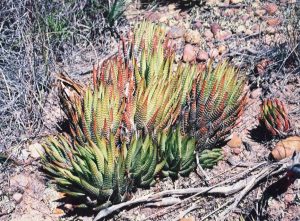
It is best to start looking for a dormancy period around October. The haworthia fasciata will start dropping its leaves and you can tell that it is time for it to go dormant when there are only about four leaves left on it. This means that you need to transplant it into a pot where there is a minimal amount of soil present, otherwise overwatering may occur.
If your zebra plant goes dormant before fall, then keep it as normal in an area with indirect sunlight or under fluorescent lights. You should not water your plant at all during dormancy; make sure to remove any excess water from its container by draining off excess water through an unplugged sink.
Flowers & Fragrance
The plant gives off a scent that most people find pleasing to one degree or another. There’s something romantic about receiving flowers, so when you give someone one of these plants as a gift, it could be construed as more of a romantic gesture than it would if you gave them some other kind of houseplant. Some individuals even consider zebra plants to be an aphrodisiac!
Growth rate
Zebra plants grow at a very slow rate. It is best to avoid moving or repotting your zebra plant during its active growth period. They tend to go dormant in their native habitat during their inactive season, so avoid repotting and fertilizing your zebra plant when it starts going dormant.
Toxicity
Haworthias are not toxic and are safe for children, pets, and those who may be extra sensitive to plants. They’re also perfectly safe for small fish tanks. If a zebra plant accidentally finds its way into your aquarium, you don’t need to worry—just take it out and make sure it gets enough sunlight and water in its new location.
USDA Hardiness Zones
Haworthia fasciata thrives very well in USDA hardiness zones 9 and 10. In other zones, they can survive outdoors as long as there is no frost. During the winter months, it is best to keep your zebra plant indoors.
If you choose to keep it outside during these months, then make sure that it is in a sheltered area where temperatures do not drop below freezing. The minimum temperature for your plant should be about 50 degrees Fahrenheit (10 degrees Celsius).
Pests and diseases
Haworthias are remarkably resistant to pests and diseases and can be grown successfully in pots or directly in garden soil. They should be repotted only when they become pot-bound, which is indicated by their roots growing through drainage holes of their containers.
If your zebra plant does get infected with a disease or pest, it’s likely because its environment has been compromised. Improper watering practices, over-fertilization, and lack of proper air circulation can all contribute to poor health.
Conclusion
Though not difficult to care for, Haworthia fasciata is sensitive and can suffer from a variety of issues. However, with proper care, your zebra plant will be a welcome addition to your home or office decor.
When selecting a pot, remember that its size should match that of your zebra plant. Your haworthia fasciata should reach full maturity in two years; if you want yours to last longer than that, keep it well-watered at all times.
